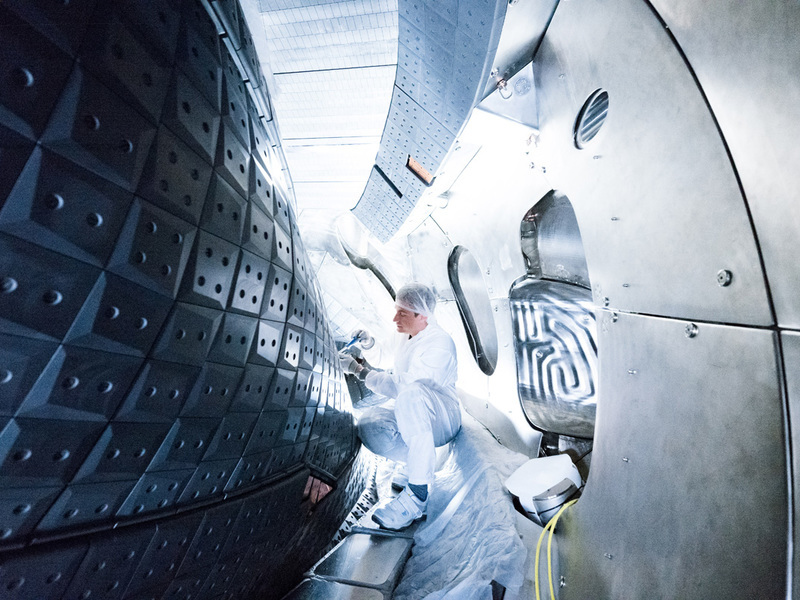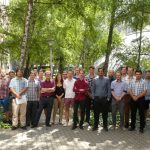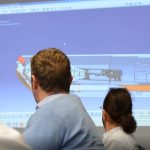Another successful experimental period have been finished on the German fusion device, Wendelstein 7-X. Plasma discharges longer than ever have been recorded by the video diagnostic and beam emission spectroscopy developed by Wigner Research Centre.
The restarted experiments in July was preceded by half-year improvements from the Wigner Plasma Physics Department, which is discussed in more detail here.
One of the goals of Wendelstein 7-X (W7-X) was to achieve longer plasma discharge during the 2017/18 experiments. In the last week before the end of the experiments, a record-length 100 second long plasma was also achieved.
Footage from previous experiments can be seen below..
In the total of 1519 so-called “shots” only video diagnostics (altogether 11 cameras) collected approximately 55 TB data, the analysis of which will take months.
It is typical for such experiments that researchers come from many different places from around the world to carry out measurements. It was the same at W7-X as well. Many have come from the US, China, Japan and many other European countries. Interestingly, besides the Germans, Wigner’s researchers got the most time to travel to Greifswald and make measurements on the spot.
Perhaps this diversity or the small town atmosphere was due to the fact that more than 70 people gathered in the W7-X control room day after day had become a community where anyone could go to anyone if he or she had a question. It happened in the summer that the colleagues surprised other colleagues with an ice cream or later apple or with a donut.
Now that the experiments are over, most of the scientists have gone home to get some rest after this long and tedious experimental period, and to analyze the measurement data to produce scientific publications. On the W7-X the experiments, following a major development, are expected to continue in 2021.
The attention of researchers and engineers of the Wigner RCP is now turning to Japan. As the first European researchers they have been granted to build and install a video camera system for the still building JT60SA tokamak. The JT-60SA is a joint European-Japanese experiment which will start in 2020. The Hungarian team will have to go with the ready-made, tested diagnostics next spring, the construction of which has already begun in Wigner.


